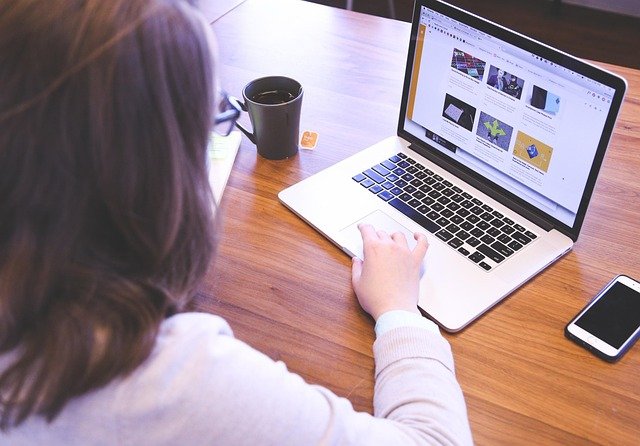Anxiety in the Digital Age: Navigating Modern Stressors
Anxiety disorders have become increasingly prevalent in recent years, with the digital age introducing a host of new stressors that were previously unknown to human experience. The constant connectivity, information overload, and social media pressures of modern life have created a perfect storm for anxiety to thrive. As our world becomes more interconnected and fast-paced, individuals find themselves grappling with an ever-expanding array of triggers and concerns. This shift in the anxiety landscape has prompted researchers and mental health professionals to reevaluate their understanding of these disorders and develop new strategies for treatment and prevention.

The rise of smartphones and social media platforms in the early 2000s marked a turning point in the anxiety landscape. Suddenly, individuals found themselves constantly connected to a vast network of information and social interactions. While this connectivity brought many benefits, it also introduced new sources of stress and anxiety. The fear of missing out (FOMO), cyberbullying, and the pressure to maintain a curated online persona have all contributed to the rise of what some experts now call “digital anxiety.”
The Impact of Information Overload
One of the most significant contributors to modern anxiety is the sheer volume of information we’re exposed to on a daily basis. The human brain, which evolved to process information at a much slower pace, is now bombarded with a constant stream of news, notifications, and social updates. This information overload can lead to cognitive overwhelm, decision fatigue, and a persistent sense of unease.
Research has shown that excessive consumption of news and social media can increase anxiety levels and even contribute to the development of anxiety disorders. The 24/hour news cycle, with its focus on negative events and potential threats, can create a distorted perception of reality and fuel feelings of helplessness and fear. Additionally, the constant comparison to others on social media platforms can lead to feelings of inadequacy and social anxiety.
The Blurring of Work-Life Boundaries
The digital age has also transformed the way we work, with remote work and flexible schedules becoming increasingly common. While these changes offer many benefits, they have also blurred the lines between work and personal life. The ability to be constantly connected to work via email and messaging apps has created a culture of “always-on” availability, leading to increased stress and anxiety.
Studies have shown that this lack of clear boundaries between work and personal time can lead to burnout, decreased job satisfaction, and higher levels of anxiety. The pressure to be constantly productive and available can create a sense of guilt when taking time off, further exacerbating anxiety symptoms. As a result, many individuals struggle to find a healthy work-life balance in the digital age.
Social Media and the Anxiety Paradox
Social media platforms have become an integral part of modern life, offering unprecedented opportunities for connection and self-expression. However, these same platforms have also been linked to increased levels of anxiety, particularly among younger users. The paradox of social media lies in its ability to both alleviate and exacerbate feelings of loneliness and anxiety.
On one hand, social media can provide a sense of community and support, particularly for individuals with niche interests or those living in isolated areas. On the other hand, the curated nature of social media posts can create unrealistic expectations and fuel feelings of inadequacy. The constant exposure to carefully selected highlights of others’ lives can lead to negative self-comparison and a distorted perception of reality.
Moreover, the addictive nature of social media platforms, designed to keep users engaged for as long as possible, can contribute to anxiety by disrupting sleep patterns and reducing face-to-face social interactions. The fear of missing out (FOMO) and the need for constant validation through likes and comments can create a cycle of anxiety and compulsive checking behavior.
Emerging Strategies for Managing Digital Anxiety
As our understanding of digital anxiety grows, new strategies for managing and preventing these modern stressors are emerging. Mental health professionals are developing targeted interventions that address the unique challenges of the digital age. Some of these strategies include:
-
Digital detoxes: Scheduled periods of disconnection from digital devices to reduce information overload and promote mindfulness.
-
Mindful technology use: Techniques for using digital tools more intentionally and setting healthy boundaries around device usage.
-
Cognitive-behavioral therapy adaptations: Modified CBT approaches that specifically address distorted thinking patterns related to social media use and online interactions.
-
Digital literacy education: Programs that teach individuals how to critically evaluate online information and navigate the digital landscape more effectively.
-
Workplace policies: Implementation of guidelines that promote a healthier work-life balance in the age of remote work and constant connectivity.
The Future of Anxiety in a Hyper-Connected World
As technology continues to advance at a rapid pace, the landscape of anxiety is likely to evolve further. The rise of artificial intelligence, virtual reality, and other emerging technologies will undoubtedly introduce new challenges and potential sources of anxiety. However, these same technologies may also offer innovative solutions for managing and treating anxiety disorders.
For example, AI-powered chatbots and virtual therapists are already being developed to provide on-demand support for individuals struggling with anxiety. Virtual reality exposure therapy shows promise in treating specific phobias and social anxiety by allowing individuals to confront their fears in a controlled, immersive environment.
As we move forward, it will be crucial to strike a balance between embracing the benefits of technology and protecting our mental wellbeing. By developing a deeper understanding of digital anxiety and implementing effective strategies for managing modern stressors, we can work towards creating a healthier, more balanced relationship with technology in the digital age.





